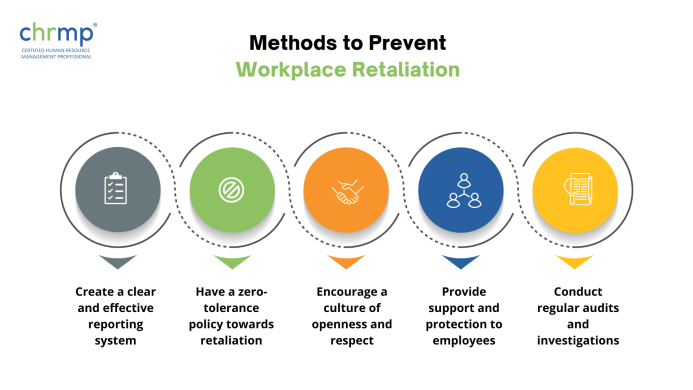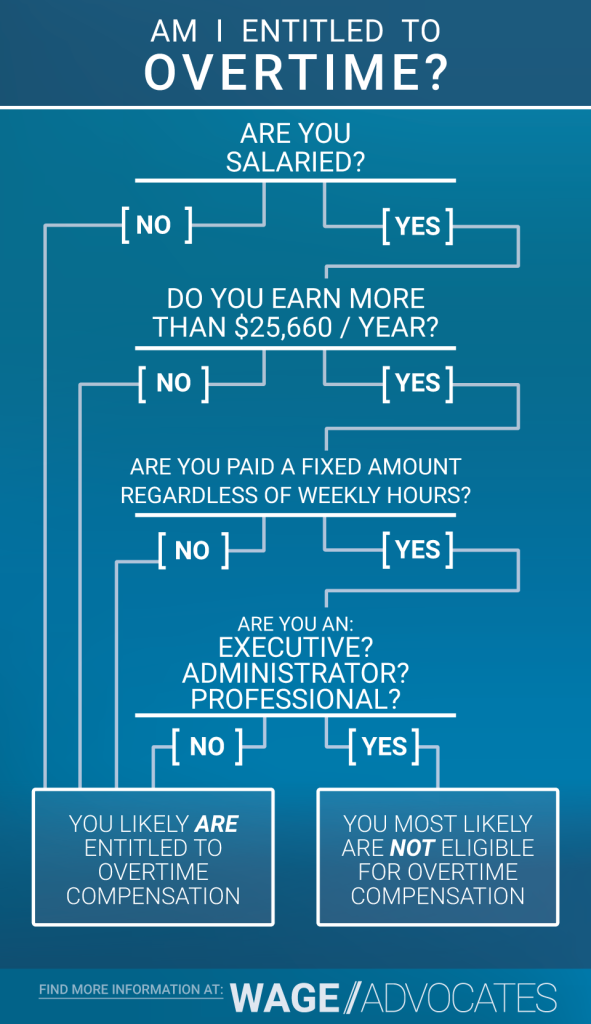
Navigating the Legal Maze: A Beginner’s Guide to Legal Compliance in the Hiring Process
Hiring new talent is one of the most exciting and crucial activities for any business. It’s how you grow, innovate, and build your team. However, it’s also an area fraught with potential legal pitfalls if not handled carefully. For businesses, especially small and medium-sized enterprises (SMEs) and those new to formal hiring, understanding legal compliance in the hiring process can feel like navigating a complex maze.
But don’t worry! This comprehensive guide is designed to demystify the legal aspects of hiring, breaking down complex regulations into easy-to-understand concepts. We’ll cover everything from crafting job descriptions to making job offers, ensuring your hiring practices are fair, ethical, and, most importantly, compliant with the law.
What is Legal Compliance in Hiring and Why Does It Matter?
At its core, legal compliance in hiring means adhering to all applicable laws and regulations throughout every stage of recruiting, interviewing, and onboarding new employees. These laws are designed to prevent discrimination, protect applicant rights, ensure fair treatment, and verify employment eligibility.
Why is it so crucial?
- Avoid Costly Lawsuits & Fines: Non-compliance can lead to expensive lawsuits, government investigations, hefty fines, and mandated changes to your hiring practices.
- Protect Your Reputation: Legal troubles can severely damage your company’s brand image, making it harder to attract top talent and customers.
- Foster a Fair & Diverse Workplace: Compliant practices promote equal opportunity, leading to a more diverse, inclusive, and ultimately, a stronger workforce.
- Build Employee Trust: A fair hiring process sets a positive tone for new employees, building trust and loyalty from day one.
- Reduce Employee Turnover: When employees feel they were hired fairly and are part of an ethical organization, they are more likely to stay.
Key Laws Governing the Hiring Process (Simplified)
While specific laws can vary by state and locality, here are some of the most significant federal laws that impact hiring in the United States:
- Title VII of the Civil Rights Act of 1964: Prohibits discrimination based on race, color, religion, sex (including pregnancy, sexual orientation, and gender identity), or national origin.
- Americans with Disabilities Act (ADA): Prohibits discrimination against qualified individuals with disabilities. It also requires employers to provide reasonable accommodations to employees and applicants with disabilities, unless doing so would cause undue hardship.
- Age Discrimination in Employment Act (ADEA): Protects individuals who are 40 years of age or older from employment discrimination.
- Genetic Information Nondiscrimination Act (GINA): Prohibits discrimination based on genetic information (e.g., family medical history).
- Fair Credit Reporting Act (FCRA): Regulates how employers can use background checks conducted by third-party agencies. It requires specific disclosures and applicant consent.
- Immigration Reform and Control Act (IRCA): Requires employers to verify the identity and employment eligibility of all new hires, regardless of citizenship, using Form I-9.
Remember, states and even local municipalities often have their own laws that can be more stringent than federal ones (e.g., "Ban the Box" laws, specific protections for LGBTQ+ individuals). Always check your local regulations!
Stage-by-Stage Compliance in the Hiring Process
Let’s break down the hiring process and the legal considerations at each step:
1. Crafting Job Descriptions and Advertisements
The very first step in hiring is often where subtle forms of discrimination can creep in. Your job description and advertisements are your first impression, and they must be legally compliant.
The Goal: Attract qualified candidates without unintentionally discouraging or excluding protected groups.
What to Do (Best Practices):
- Focus on Essential Functions: Clearly list the core duties and responsibilities required for the job.
- Use Neutral Language: Avoid words that imply a preference for a certain age, gender, race, or other protected characteristic (e.g., "young and energetic," "waitress," "handyman").
- State Minimum Qualifications Clearly: Define the non-negotiable skills, experience, or education needed.
- Include EEO Statement: Many companies include an "Equal Employment Opportunity" (EEO) statement to affirm their commitment to diversity and non-discrimination.
- Mention Physical Requirements (if applicable): If the job has physical demands, describe them objectively (e.g., "ability to lift 50 pounds," not "must be strong").
What to Avoid (Red Flags):
- Age-Specific Terms: "Recent graduate," "energetic young team," "senior candidate" (unless directly related to a bona fide occupational qualification, which is rare).
- Gendered Language: "He/she," "salesman," "foreman" – use gender-neutral terms like "they," "salesperson," "supervisor."
- Race/Ethnicity/National Origin Indicators: Any language that suggests a preference for or against a specific group.
- Religious Affiliation: Unless it’s a religious organization with a specific exemption, avoid any religious requirements.
- Marital/Family Status: Don’t ask for or imply a preference for single, married, or childless individuals.
- Disability-Related Inquiries: Avoid asking if someone has a disability or requiring medical exams before a job offer.
2. Application and Screening Processes
Once your ad is out, applications will roll in. How you collect and screen them is also subject to legal scrutiny.
The Goal: Collect relevant information to assess qualifications fairly and consistently, without requesting protected information.
What to Do (Best Practices):
- Standardized Application Forms: Use consistent forms for all applicants. This helps ensure you collect the same information from everyone and don’t accidentally ask prohibited questions verbally.
- Focus on Job-Related Questions: Every question on your application should directly relate to the applicant’s ability to perform the job.
- Consistent Screening Criteria: Develop clear, objective criteria for screening applications (e.g., minimum years of experience, specific certifications) and apply them uniformly to all candidates.
- Use Applicant Tracking Systems (ATS): An ATS can help manage applications efficiently and ensure a consistent screening process.
What to Avoid (Red Flags):
- Asking for Protected Characteristics:
- Date of birth (can reveal age)
- Marital status, number of children
- Religion, church affiliation
- Race or ethnicity
- Disability status (pre-offer)
- Nationality or place of birth
- "Ban the Box" Violations: Many states and localities have "Ban the Box" laws that prohibit employers from asking about an applicant’s criminal history on initial job applications. You may only be able to inquire about criminal records later in the process, and even then, specific rules apply.
- Requiring Photos: Do not ask for or require applicants to submit photos with their applications.
3. The Interview Process
Interviews are a critical stage for evaluating candidates, but they are also a common source of legal claims if not handled correctly.
The Goal: Assess a candidate’s skills, experience, and fit for the role through job-related questions, avoiding personal inquiries.
What to Do (Best Practices):
- Structured Interviews: Develop a set of consistent, job-related questions for all candidates applying for the same position. This ensures fairness and makes comparisons easier.
- Focus on Skills & Experience: Ask behavioral questions (e.g., "Tell me about a time when you had to manage a difficult client.") that reveal how a candidate has handled past situations relevant to the job.
- Listen Actively: Pay attention to what the candidate says, not their appearance or personal background.
- Document: Take clear, objective notes during the interview, focusing on the candidate’s answers to job-related questions. Avoid subjective comments or notes about protected characteristics.
- Training for Interviewers: Ensure all interviewers are trained on legal compliance and best practices for interviewing.
What to Avoid (Red Flags):
- Personal Questions Unrelated to the Job:
- "Are you married?" "Do you have children?" "What are your childcare arrangements?"
- "What religion do you practice?" "What church do you attend?"
- "How old are you?" "When do you plan to retire?"
- "Where are you from originally?" "What is your nationality?"
- "Do you have any disabilities?" "Are you pregnant?"
- "What is your sexual orientation?"
- Making Assumptions: Do not assume a candidate’s abilities or limitations based on their appearance, age, gender, or any other protected characteristic.
- Leading Questions: Avoid questions that suggest a desired answer or reveal a bias.
- Asking About Salary History: Many states and localities prohibit employers from asking about a candidate’s past salary history. Focus on salary expectations for the current role instead.
4. Background Checks and Reference Checks
Once you’ve identified a promising candidate, you might want to verify their information and check their background. This step is heavily regulated, especially if you use a third-party service.
The Goal: Verify qualifications and assess potential risks, while respecting applicant rights and privacy.
What to Do (Best Practices):
- Obtain Written Consent (FCRA): If you use a third-party company to conduct background checks (credit, criminal, driving records, etc.), you must provide the applicant with a clear disclosure that you intend to do so and obtain their written authorization. This is mandated by the Fair Credit Reporting Act (FCRA).
- Provide a Copy of Rights (FCRA): You must also provide the applicant with a copy of "A Summary of Your Rights Under the Fair Credit Reporting Act."
- Adverse Action Process (FCRA): If you decide not to hire someone based on information in their background check report, you must follow a specific "adverse action" process:
- Pre-Adverse Action Notice: Send the applicant a letter, a copy of the background report, and a copy of their FCRA rights. Give them a reasonable time (typically 5 business days) to review the report and dispute any inaccuracies.
- Final Adverse Action Notice: If they don’t dispute it or the dispute doesn’t change your decision, send a final letter stating your decision, along with details about the consumer reporting agency.
- Job-Relatedness & Consistency: Ensure that any background check conducted is relevant to the job and that you apply the same standards consistently to all similar candidates.
- Ban the Box (Again): Even if you can ask about criminal history at this stage, ensure your policy for evaluating criminal records is compliant. Consider the nature and gravity of the offense, the time elapsed since the offense, and the nature of the job.
- Reference Checks: Only contact references provided by the applicant. Be consistent in the questions you ask. Stick to job-related inquiries (e.g., "What were their main responsibilities?" "What are their strengths/weaknesses related to work?"). Avoid asking references about protected characteristics of the applicant.
What to Avoid (Red Flags):
- Conducting Checks Without Consent: Never run a background check without the applicant’s explicit, written permission.
- Ignoring FCRA Requirements: Failing to follow the disclosure, consent, and adverse action procedures can lead to significant legal penalties.
- Discriminatory Use of Information: Using background check results in a way that disproportionately impacts a protected group without a strong business justification.
- Asking References Prohibited Questions: Don’t ask a reference if the candidate is married, has kids, or any other personal information.
5. Job Offers
Congratulations, you’ve found your ideal candidate! The job offer stage is where you formalize the employment relationship.
The Goal: Clearly communicate the terms of employment in a legally sound manner.
What to Do (Best Practices):
- Written Offer Letter: Always provide a written offer letter. It serves as a clear record of the terms and conditions of employment.
- Clear Terms: Include key details such as:
- Job title and reporting structure
- Start date
- Compensation (salary/hourly rate)
- Benefits (health insurance, PTO, etc.)
- Contingencies (e.g., "contingent upon successful completion of a background check," "contingent upon satisfactory drug test results").
- "At-Will" Employment: If your state operates under "at-will" employment, you may want to state that the employment relationship is "at-will," meaning either the employer or employee can terminate the employment at any time, with or without cause, provided it’s not for an illegal reason.
- Reasonable Accommodation: If the candidate has a known disability, be prepared to discuss reasonable accommodations if requested.
What to Avoid (Red Flags):
- Oral Promises that Contradict Written Offer: Avoid making verbal promises about terms of employment that aren’t included or contradict the written offer, as this can lead to disputes.
- Discriminatory Terms: Ensure the offer terms (salary, benefits) are consistent with those offered to employees in similar positions, avoiding any discriminatory pay practices.
6. Onboarding and Form I-9
The first few days on the job involve crucial legal steps, particularly related to verifying employment eligibility.
The Goal: Verify the new employee’s identity and eligibility to work in the United States.
What to Do (Best Practices):
- Complete Form I-9 (Employment Eligibility Verification): This form, mandated by the U.S. Citizenship and Immigration Services (USCIS), must be completed for every new hire, regardless of their citizenship status.
- Employee Section 1: Must be completed and signed by the employee no later than their first day of employment.
- Employer Section 2: Must be completed by the employer within three business days of the employee’s first day of employment. You must physically examine original, unexpired documents presented by the employee from the I-9 List of Acceptable Documents.
- Do Not Discriminate Based on Documents: You cannot tell an employee which specific documents from the List of Acceptable Documents they must present, as long as the documents presented are valid and appear genuine.
- E-Verify (if applicable): If you participate in E-Verify (a web-based system that allows employers to confirm the eligibility of their employees to work in the United United States), follow all E-Verify procedures carefully.
- Keep Records: Retain completed I-9 forms for the required period (either three years after the date of hire or one year after employment is terminated, whichever is later).
What to Avoid (Red Flags):
- Late or Incomplete I-9s: Failure to complete I-9s accurately and on time can result in significant fines.
- Asking for Specific Documents: Do not demand a Green Card, Social Security card, or any other specific document. Let the employee choose from the acceptable list.
- Over-Documenting: Do not ask for more documents than required for the I-9 form.
- Discrimination During I-9 Process: Treating individuals differently based on their perceived national origin or citizenship status during the I-9 process is illegal.
General Best Practices for Ongoing Compliance
Legal compliance isn’t a one-time checklist; it’s an ongoing commitment.
- Train Your Team: Regularly train all managers and HR personnel involved in hiring on current employment laws and your company’s hiring policies.
- Document Everything: Keep meticulous records of your hiring process: job descriptions, applications, interview notes, background check authorizations, offer letters, and I-9 forms. This documentation is crucial if you ever face a legal challenge.
- Regularly Review Policies: Employment laws change. Periodically review and update your hiring policies and procedures to ensure they remain compliant with federal, state, and local regulations.
- Consult Legal Counsel: When in doubt, or for complex situations, always consult with an experienced employment law attorney. Proactive legal advice is far less expensive than reactive litigation.
- Foster a Culture of Fairness: Beyond just following the rules, cultivate a company culture that values diversity, equity, and inclusion. This proactive approach inherently reduces the risk of discrimination.
Conclusion: Invest in Compliance, Invest in Your Future
Legal compliance in the hiring process might seem daunting at first, but by understanding the core principles and implementing best practices at each stage, you can significantly mitigate risks. Remember, the goal isn’t just to avoid lawsuits; it’s to build a fair, diverse, and productive workforce that drives your business forward.
By taking a proactive and informed approach to legal compliance, you’re not just protecting your business – you’re laying the foundation for a strong, ethical, and successful future.
Disclaimer: This article provides general information and is not intended as legal advice. Employment laws are complex and constantly evolving. It is crucial to consult with a qualified legal professional to discuss your specific circumstances and ensure full compliance with all applicable federal, state, and local laws.




Post Comment